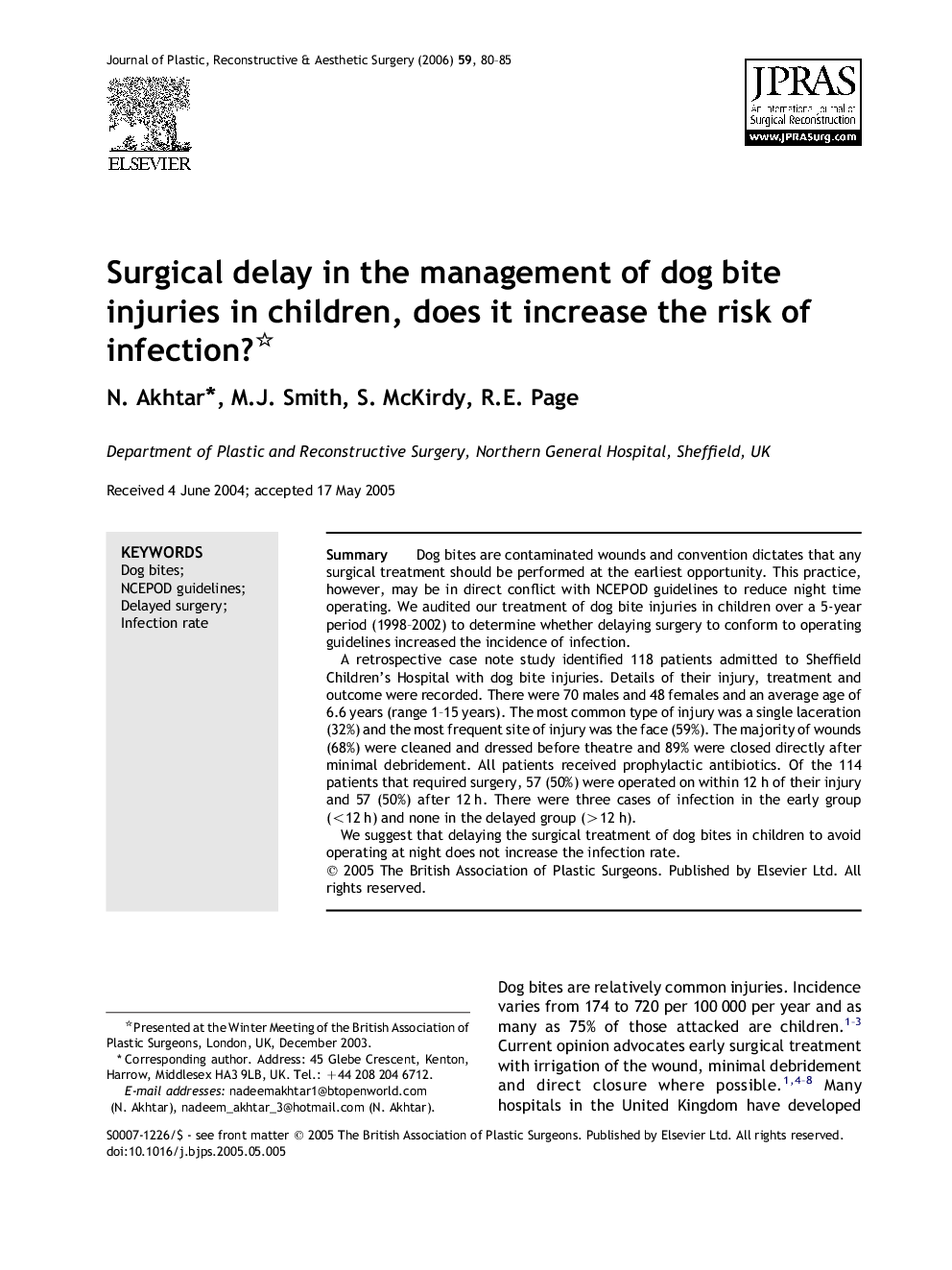| Article ID | Journal | Published Year | Pages | File Type |
|---|---|---|---|---|
| 4121490 | Journal of Plastic, Reconstructive & Aesthetic Surgery | 2006 | 6 Pages |
SummaryDog bites are contaminated wounds and convention dictates that any surgical treatment should be performed at the earliest opportunity. This practice, however, may be in direct conflict with NCEPOD guidelines to reduce night time operating. We audited our treatment of dog bite injuries in children over a 5-year period (1998–2002) to determine whether delaying surgery to conform to operating guidelines increased the incidence of infection.A retrospective case note study identified 118 patients admitted to Sheffield Children's Hospital with dog bite injuries. Details of their injury, treatment and outcome were recorded. There were 70 males and 48 females and an average age of 6.6 years (range 1–15 years). The most common type of injury was a single laceration (32%) and the most frequent site of injury was the face (59%). The majority of wounds (68%) were cleaned and dressed before theatre and 89% were closed directly after minimal debridement. All patients received prophylactic antibiotics. Of the 114 patients that required surgery, 57 (50%) were operated on within 12 h of their injury and 57 (50%) after 12 h. There were three cases of infection in the early group (<12 h) and none in the delayed group (>12 h).We suggest that delaying the surgical treatment of dog bites in children to avoid operating at night does not increase the infection rate.
